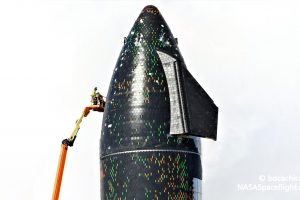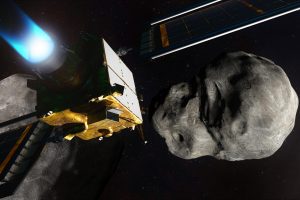New photos of the SpaceX Starship program’s first Super Heavy confirm that the booster prototype – known as Booster Number 1 (BN1) and set to become the largest rocket booster ever built – is already halfway complete.
Set to be the world’s tallest, heaviest, and most powerful liquid rocket booster ever built, Super Heavy is expected to measure some 70 meters (~230 ft) tip to tail, weigh ~3700 metric tons fully fueled, and produce around 7500 metric tons (16.5 million lbf) of thrust at liftoff. Starship, the reusable upper stage and spacecraft SpaceX is busy prototyping and testing, is 40% shorter than Super Heavy and features less than a quarter as many Raptor engines, producing thrust roughly equivalent to Falcon 9’s first stage.
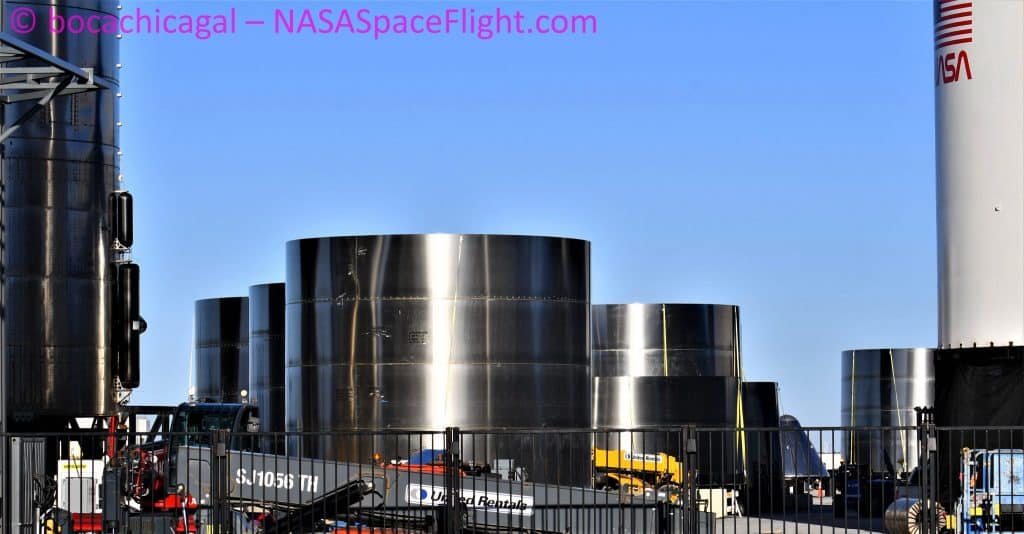
Super Heavy will be equivalent to almost ten Falcon 9s at full thrust and outclass every rocket ever built. However, the basic design of the booster is effectively the same as any other liquid-fueled rocket, opting for a tall and thin Falcon-style cylinder with a high aspect ratio and no exterior coating – just bare metal.
Super Heavy’s airframe is made up of two main propellant tanks joined by a “common dome” and capped at both ends with an interstage (the structure that mates the booster to Starship) and engine/skirt section (encloses the thrust dome, supports landing legs, and houses umbilical ports).

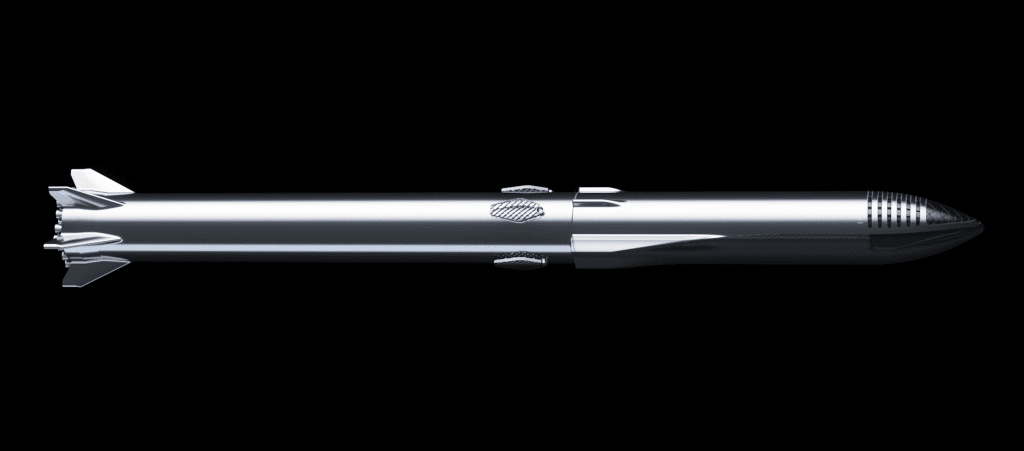
While Super Heavy is dramatically different from Starship by almost any measure, SpaceX has ensured that hardware commonality is as extensive as possible. Ultimately, with minor tweaks, that means that SpaceX can (in theory) build Super Heavy with the exact same tools and techniques it’s used to churn out Starship prototypes.
As of the end of this month, a flurry of public photos from local (and visiting) photographers have confirmed that Super Heavy booster BN1 is effectively halfway to completion and currently stands 18 steel rings tall. Aside from booster-specific layout changes, that 33-meter-tall (~105 ft) barrel section is virtually identical to a Starship’s 20-ring barrel section, lacking only conical nose section that caps them off.
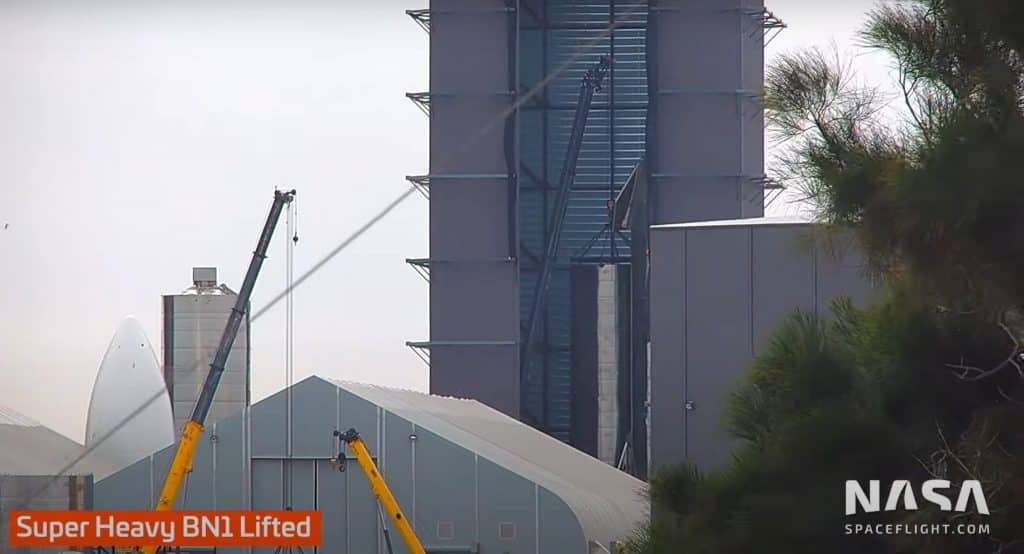
The 18-ring stack also guarantees that the current assembly is Super Heavy BN1’s liquid oxygen (LOx) tank and confirms that like ITS, BFR, Falcon 9, and other SpaceX rockets, Super Heavy’s LOx tank will sit above its fuel (methane) tank. Likely either 38 or 39 rings tall overall, it also indicates that BN1 is a ring away from half of its full height, leaving the integration of its strengthened methane tank, custom engine section, and skirt as the last major tasks standing between SpaceX and its first Super Heavy prototype.
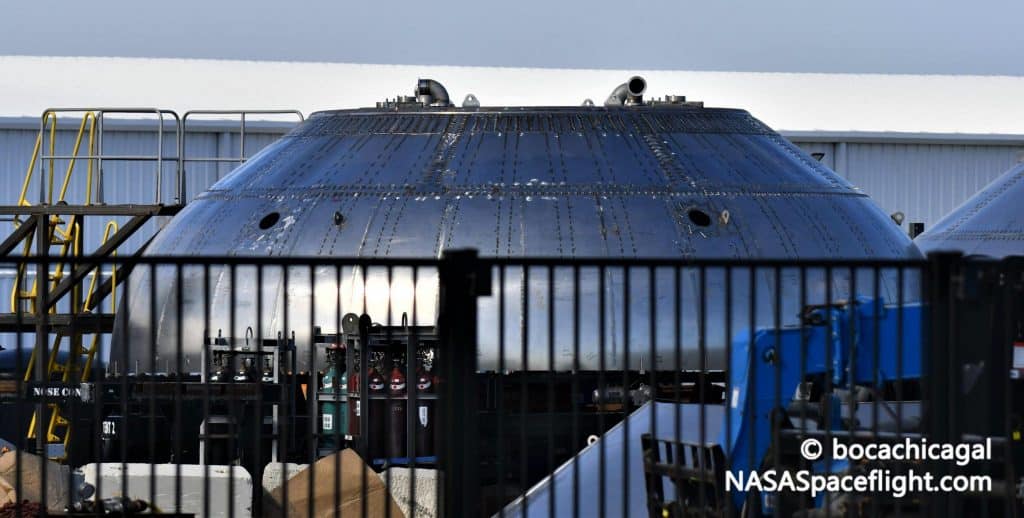
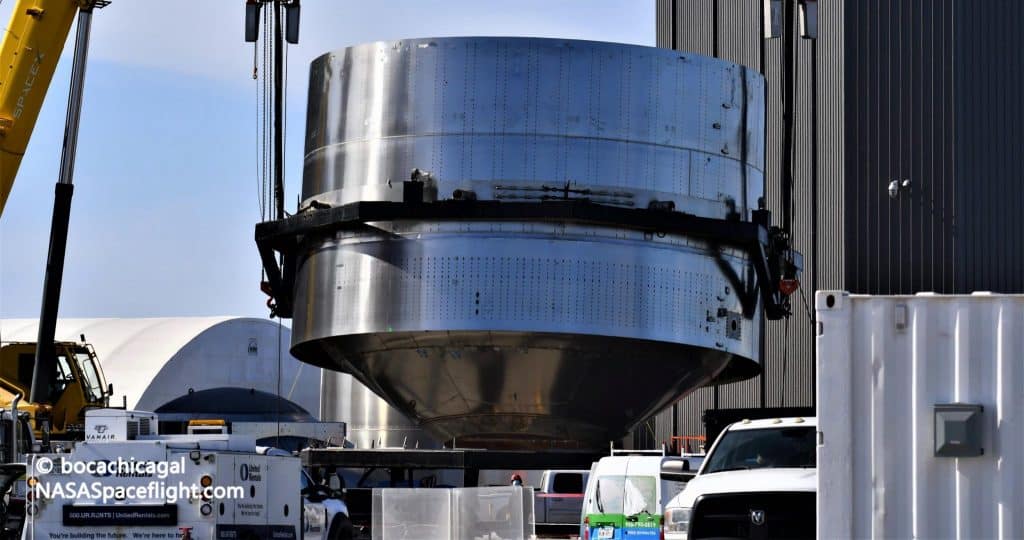
According to Elon Musk, SpaceX will likely hop BN1 if or when it passes initial cryogenic proof and static fire testing. If that goes according to plan, it’s unclear if BN1 can be converted for two-stage Starship launch attempts or if SpaceX will simply move on to BN2 (already under construction).
Original Publication by Eric Ralph at Teslarati.



